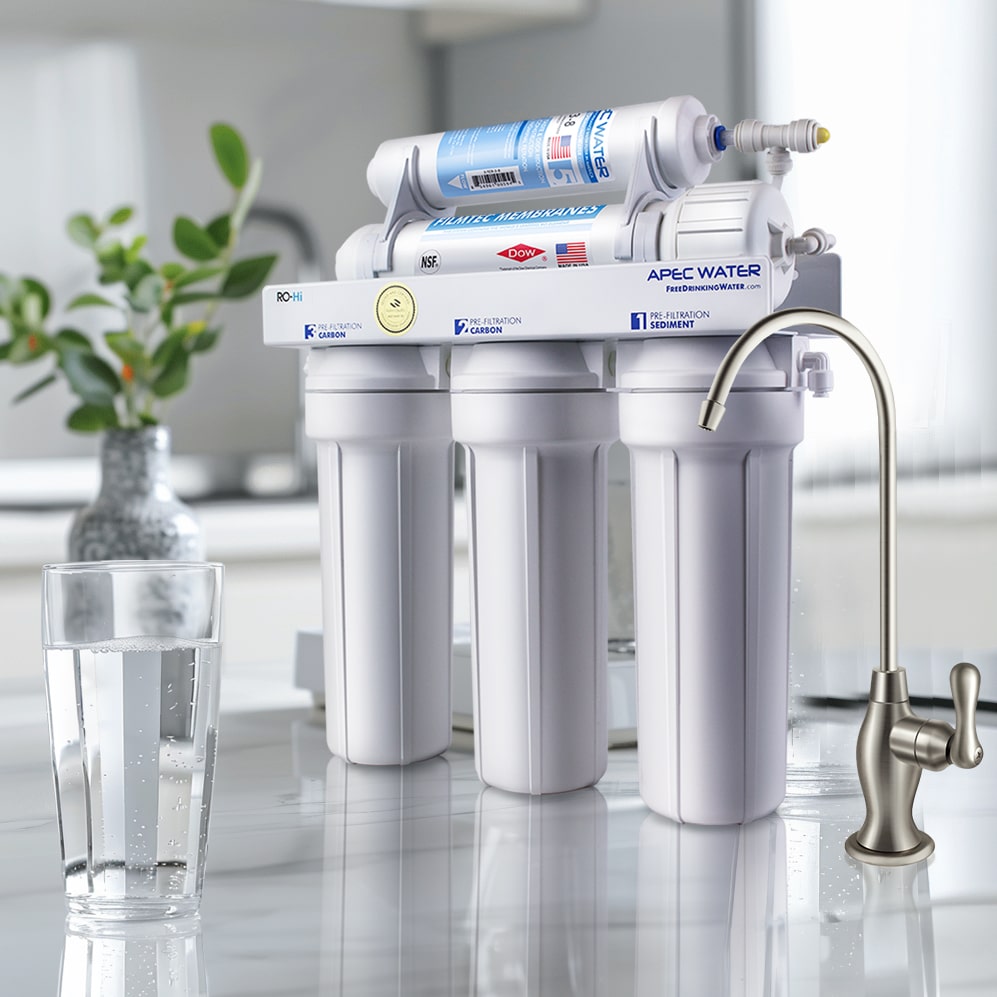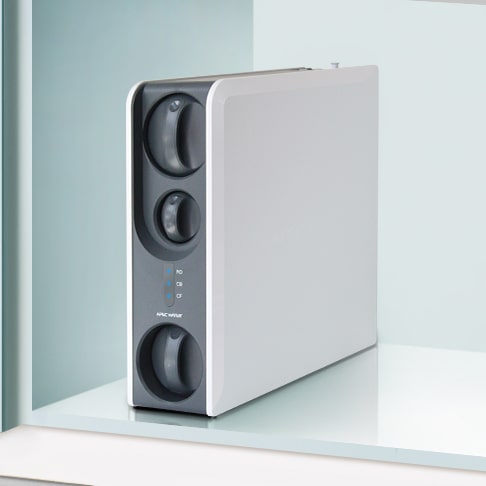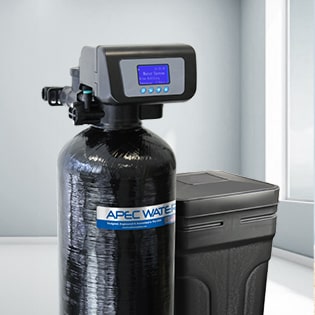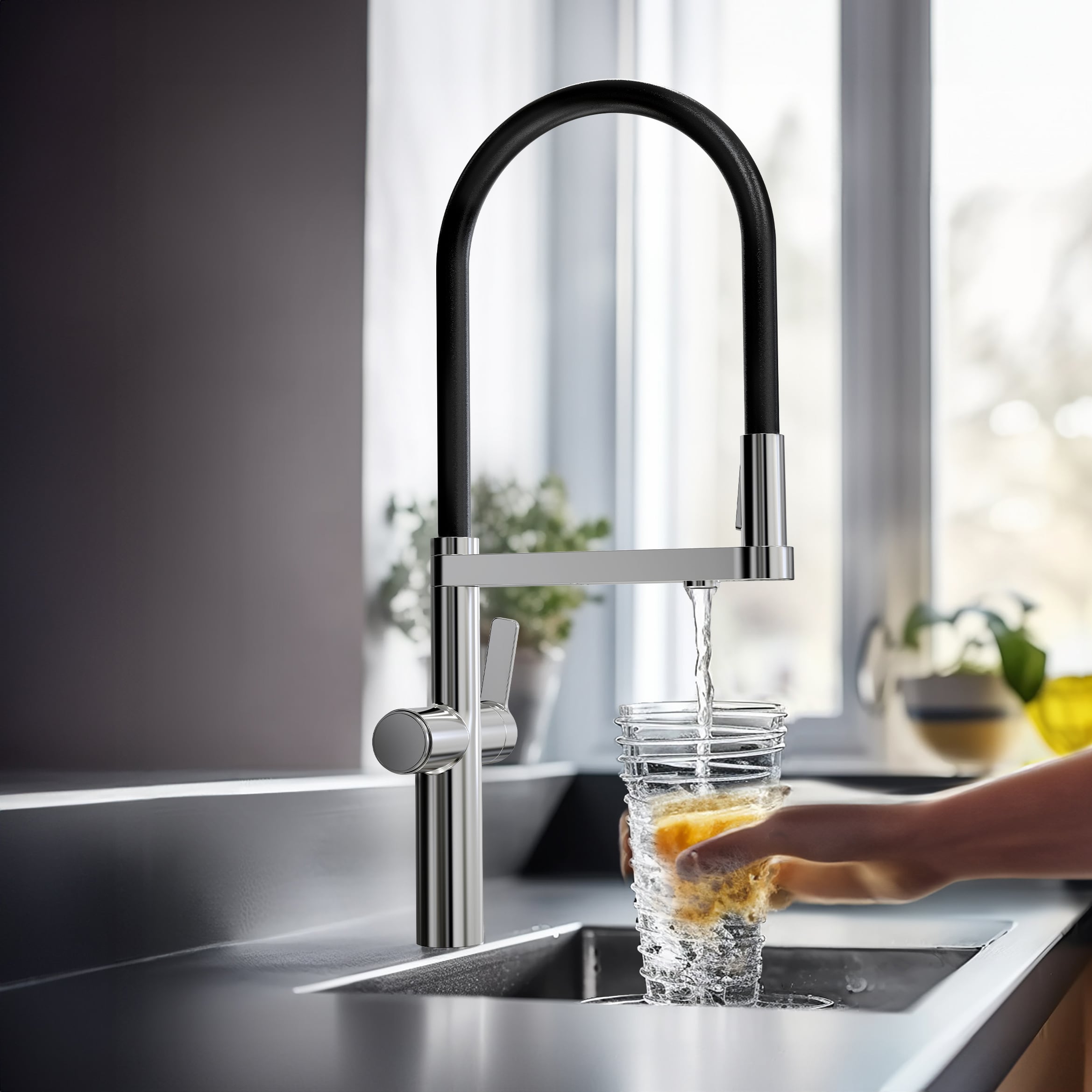How Much Do You Know about Plastic Bottles?
Choose Plastic Bottles Carefully to Prevent Chemicals in the Plastic from Leaching into Your Water. Consider Switching to the Good, Old-Fashion Glass Bottles or the Stainless-Steel Vacuum Bottles!
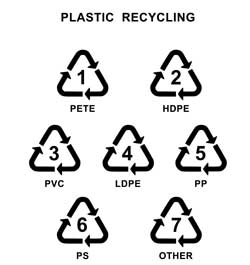
Humanity is using more and more plastics in the form of bottles every year. According to a news article published by the Christian Science Monitor, citing the Container Recycling Institute, in 1990 Americans bought 1.1 billion pounds of plastic, but in 2002, they bought more than three times that, 4 billion pounds! With our increasing use of plastic bottles to fill everything from water to beverages and food, how much do we know about them and their safety? Are these plastic bottles safe enough for us to fill them with pure filtered water and drink from them?
What are these plastic bottles? To answer this question, we have furnished a list of most commonly used plastic containers and bottles in the United States, as follows:
- #1 PET or PETE (polyethylene terephthalate)—This clear and tough plastic is often used in carbonated soft drinks (such as the 2-liter soda containers), juice, beer, mouthwash, peanut butter, salad dressing, and detergent and cleaner containers. Water is usually sold in #1 bottles not recommended for refills and considered for one-time use only. The problem with this type of plastic is that it leaches antimony trioxide, which has been shown to cause respiratory and skin irritation, menstrual problems and miscarriage in among, and slower mental development among children in the first 12 months of life, among other problems in people who have been exposed to this chemical over a long period of time. The longer a liquid is left in the #1 container, the higher the concentration of antimony trioxide released into the liquid.
- #2 HDPE (high-density polyethylene)—Plastic containers in this category include Tupperware, laundry detergent bottles, shampoo bottles, milk jugs, juice bottles, water containers, yogurt, and margarine tubs, cereal box liners, and generally harder and more opaque plastic bottles suitable for refills.
How Much Do You Know about Plastic Bottles?
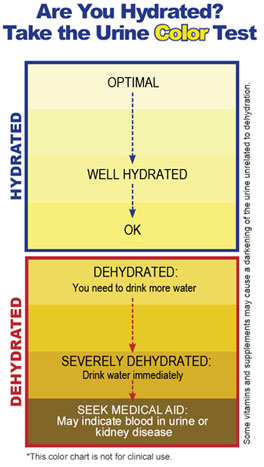
- #3 PVC (polyvinyl chloride)—This type of plastics contains di-2-ethylhexyl phthalate (DEHP), an endocrine disruptor and a probably human carcinogen. Unfortunately, water pipes carrying municipal tap water into most American homes are made with PVC. Food wrappers (such as cling wrap), some squeeze bottles, shampoo bottles, cooking-oil jars, peanut-butter jars, detergent and window cleaner bottles, shower curtains, medical tubing, automotive parts (including the plastics panels that line the inside of cars), and most pipings and sidings in modern construction are made of PVC. Health advocates and researchers have described PVC as among the most dangerous and toxic consumer products ever manufactured. PVC will leak plasticizer and softeners DEHP and BBzP (buty benzyl phthalate) into food and water. Both DEHP and BBzP are endocrine disruptors that can mimic human estrogen; they have been linked to asthma and allergies in children and certain types of cancers.
- #4 LDPE (low-density polyethylene)—This type of plastics is characterized by clarity and flexibility. It is often used to make bottles and bags that require extra flexibility (such as six-pack soda-can rings, clear produce bags and grocery bags, garbage bags, shrink-and-stretch film, squeezable bottles of mustard, and honey, and coating for milk cartons).
- #5 PP (polypropylene)—Plastics that have high tensile strength, making them ideal in the manufacturing of caps and lids that hold tightly onto threaded openings. Consumers often see this category of plastics in ketchup and syrup bottles, yogurt containers, medicine bottles, syrup bottles (e.g., maple and cough syrup), straws, Rubbermaid food containers, and other opaque plastic containers.
- #6 PS (polystyrene)—Commonly used in Styrofoam containers (such as egg cartons, disposable cups and bowls, take-out food containers, plastic cutlery, and CD cases, this type of plastic may leach styrene, a possible endocrine disruptor, and a cancer trigger, into food and water. Long-term exposure to styrene may trigger potential reproductive and developmental problems and people may suffer negative brain and nervous system effects. When oily foods are heated in polystyrene containers, styrene then leaches in large amounts from the containers into food.
- #7 OTHER (containing Bisphenol-A, or BPA)—This category includes the controversial sports water bottles sold by Nalgene, which are the hard, clear, colorful, light-weight, and unbreakable polycarbonate plastic bottles. In May 2008, the Canadian government restricted this type of plastic used in baby bottles. BPA is an ingredient in the production of polycarbonate plastics and as the epoxy resins that line the inside of most food and beverage cans. In addition to being used in food and water containers, BPA is also used in dental prosthetics and sealants. (Consumers take note: Food cans contain a plastic liner made with BPA, which has been known to leach into canned food. BPA has been shown to mimic human hormone, cause precancerous tumors, trigger urinary tract problems, a suspect in triggering breast cancer and prostate cancer, and accelerate aging by causing early puberty.) Worldwide 6.6 billion pounds of BPA is produced annually.
 |
 |
 |
 |
 |
 |
 |
How Much Do You Know about Plastic Bottles?
Are Plastic Bottles Safe? Chemical BPA a Suspect in Triggering Breast Cancer, Prostate Cancer, Early Puberty, and Obesity
Are plastic bottles safe? This question can be answered by reading the previous list of types of plastics used in various food and water containers. As for the safety of the popular Nalgene bottles, let's take a hint from the Canadian government: In April 2008, the Canadian government banned all polycarbonate plastic baby bottles. After reviewing 150 medical-research papers, the Canadian health minister said that children up to the age of 18 months were at the most risk from the chemical BPA. The Canadian government was ready to declare this chemical ingredient in plastic bottles "toxic." In April 2008, even the retail giant Wal-Mart announced that it will pull all polycarbonate plastic water bottles from its shelves in Canada and the United States by early 2009. Retailer Toys "R" Us has planned to phase out all BPA-containing plastic bottles by the end of 2008.
As many readers know, in April and May 2008, certain types of popular plastic bottles (i.e., the clear Nalgene bottles) have been in controversy over their safety. To put the chemicals in plastic bottles in perspective, the United States Environmental Protection Agency (EPA) has approved some 80,000 chemicals for consumer use, according to the Center for Children's Health and the Environment. Of those 80,000 approved chemicals, 2,800 are manufactured in large volumes of more than one million pounds per year. But fewer than half of those high-volume consumer-use chemicals have been studied for their toxicity and health effects in animals or humans (reported in the New York Times, April 2008). Essentially, until these recent years, few people knew of the harmful health effects of BPA in polycarbonate plastic water bottles.
Other food-related containers are not safe as well: In early 2008, 24 manufacturers and retailers of children's vinyl lunch boxes were sued by a nonprofit organization in Oakland, California, after two independent labs tested lead in them. Babies and children are especially vulnerable to chemicals found in plastic bottles because they are still developing and even small amounts of toxic substances can cause profound and long-term effects in them.
For Your Family's Health
To be safe, if you are currently using reusable plastic bottles to fill them with the pure R.O. water filtered at home, consider switching to either the good, old-fashion glass bottles or the temperature-insulated stainless-steel vacuum bottles. Yes, we know that glass and steel bottles are not as fabulously attractive, colorful, light-weight, shatter-resistant, cheap, and in general, more convenient, than plastic bottles and polycarbonate plastic (such as Nalgene) sports bottles. But in the long run, you will be drinking pure water without having to worry about any leached chemicals. One additional advantage of these bottles: the glass and stainless-steel containers are durable and probably more economical in the long run.
For babies and children, we definitely recommend against using any type of plastic bottles for their food and drink. Baby bottles should be made of glass that doesn't leak chemicals and doesn't react with milk and another baby formula. Children should use glass, ceramic, or stainless-steel cups and bowls. We caution that even adults should try to avoid food and drink containers made of plastic. As for storing several gallons of water at home for regular or emergency use, use glass jugs and store the water out of direct sunlight whenever possible.
Try to reduce your intake of canned food as well because the food cans are lined with BPA-containing plastic liners (#7, OTHER). BPA also leaches into the food in the cans.
For Environmental Health
Plastic bottles are convenient and ubiquitous, so much so nowadays that plastic-bottle litter is an ever-present part of our urban landscapes. Their presence and litter can be found from the Arctic to the Sahara Desert, from Siberia to the Amazons, and from the Himalayas to the middle of the Pacific Ocean, with their reach spreading all over the globe. In 2006 alone, people discarded 38 billion water bottles in landfill without recycling them (only 23% of all water bottles are ever recycled). In general, it is good to avoid plastics whenever possible. Consider the following sets of facts (from many commonly cited news, government, and industry sources):
- Worldwide 2.7 million tons of plastics are used annually to bottle drinking water. (OneWorld)
- Americans will buy an estimated 25 billion one-serving, plastic water bottles in 2008. Eight out of 10 (22 billion) will be thrown away and ended up in a landfill. (Container Recycling Institute)
- An estimated 1.5 million barrels of oil will be used just so that Americans can consume plastic bottled water; this amount of oil is sufficient to fuel some 100,000 cars in America for a year. (Earth Policy Institute)
So, use glass or steel bottles to bottle your own filtered water at home and improve your health while reducing your contribution to global pollution!
